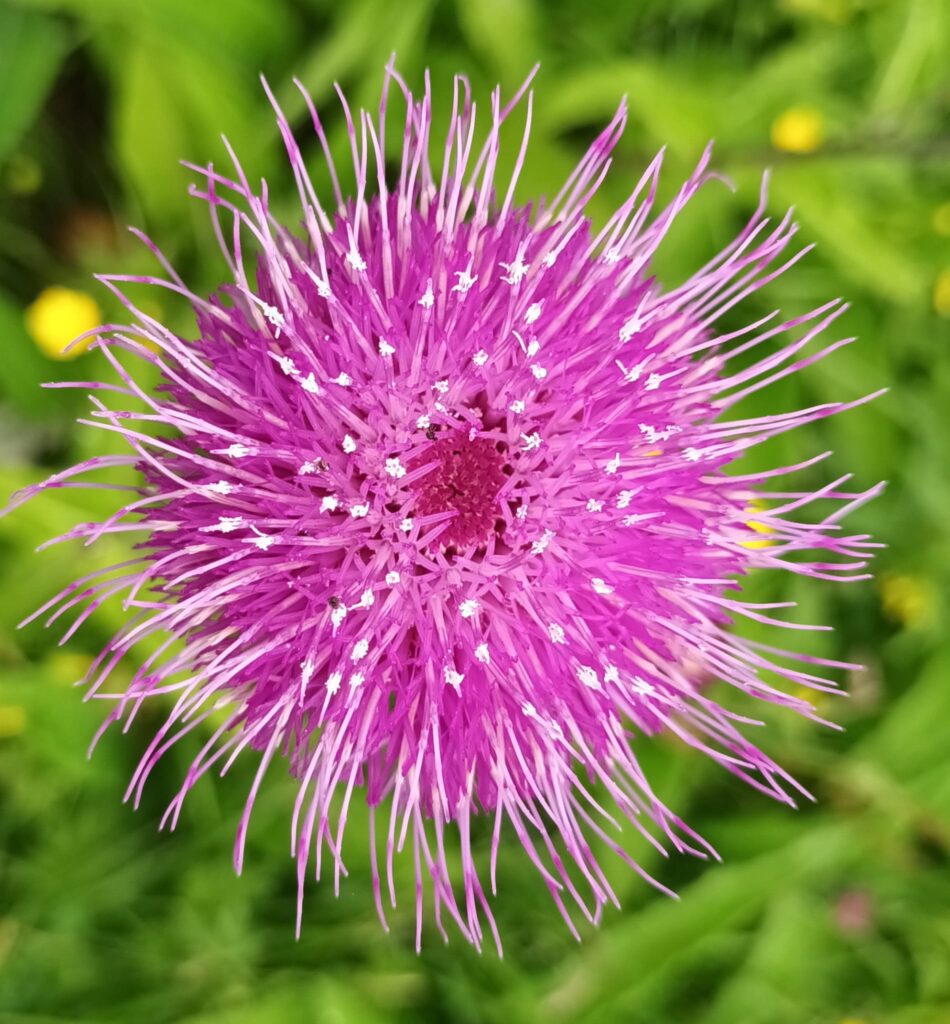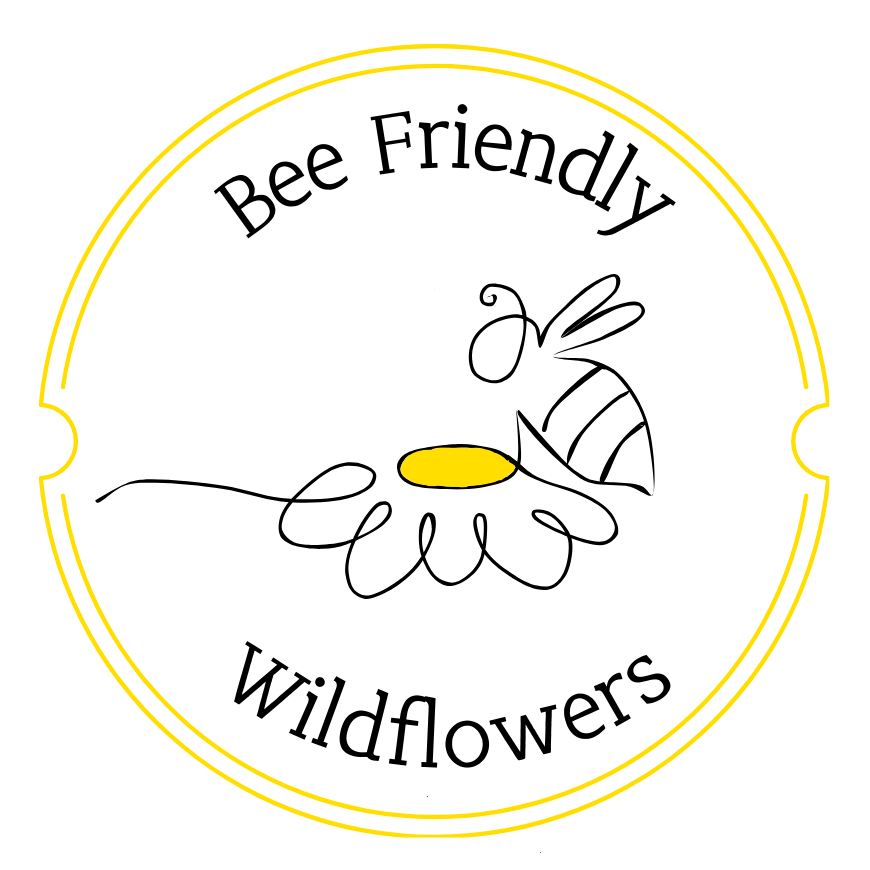The Joy of Melancholy Thistle
When was the first time you saw a melancholy thistle?
I cannot exactly remember when I saw my first melancholy thistle (Cirsium heterophyllum); I think it was on a summer’s walk through one of Yorkshire Wild Trust nature reserves, located under the summit of Ingleborough in North Yorkshire. Like a passing bumblebee or butterfly, I was immediately stopped in my travels by this stunning native wildflower.
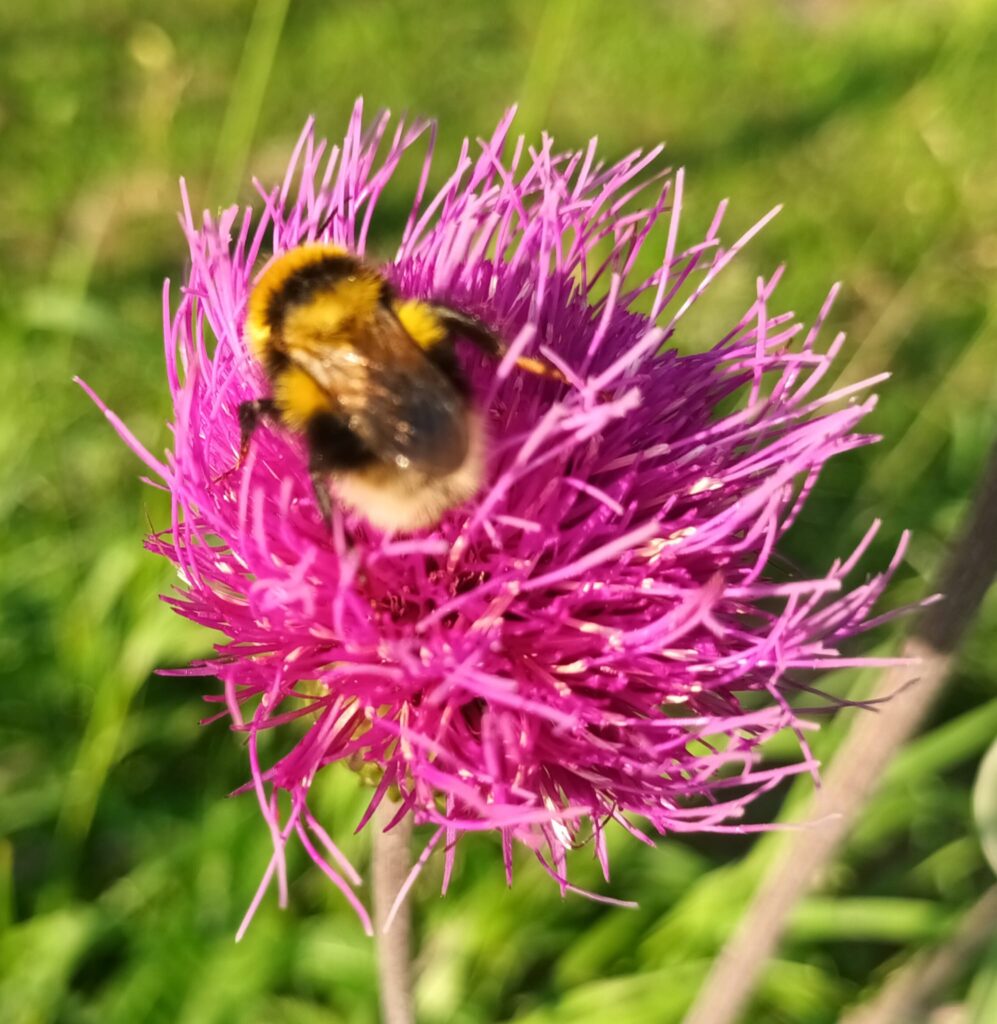
What do they look like?
Melancholy thistles have distinctive flowerheads shaped like shaving brushes which are a vibrant bright purple in colour. Flowerheads are usually solitary, but 2 or 3 may grow in a cluster. Tall and statuesque, they can grow to a height of between 45-120cm.
Their leaves have a white underside and are soft and downy to touch and, unique to the thistle family, melancholy thistles stems are absent of prickles.
They have a long flowering period, typically from June to August.
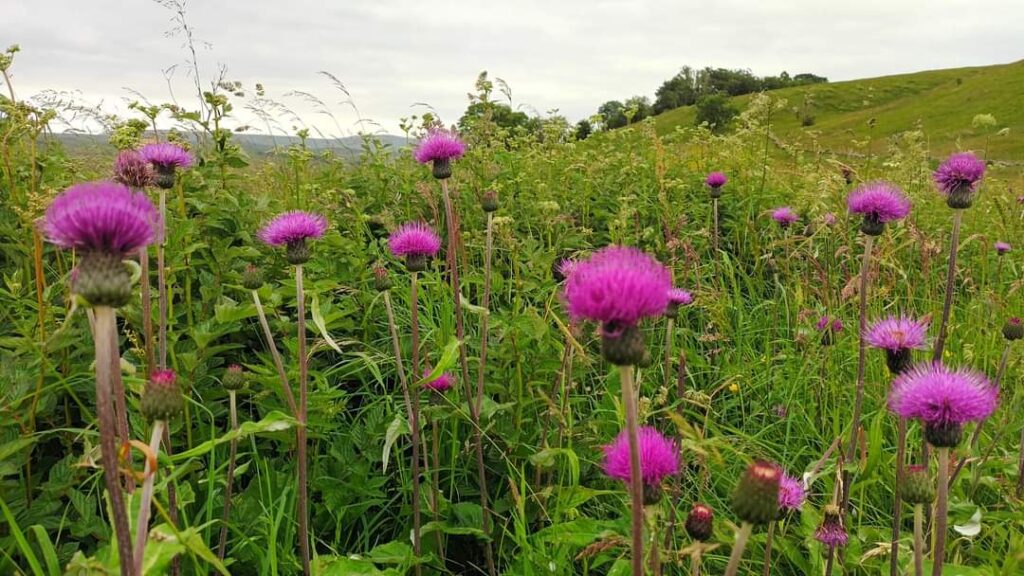
Why such a strange name?
The ‘Melancholy’ name is thought to derive from its historical use as a potion to prevent ‘melancholia’ – a form of depression. Nicholas Culpeper’s Complete Herbal, printed in 1653 stated: “the decoction of the thistle in wine being drank, expels superfluous melancholy out of the body, and makes a man as merry as a cricket”.
A local name for them is “fish bones” and if you look at the pale underside of the leaf you will see why.
Who else likes them?
Melancholy thistles are incredibly valuable for wildlife. Their long flowering period ensures bees have ample opportunity to dive head first into the bright purple flowerhead. After flowering, the bulging seed heads attract birds like goldfinches.
Where do you find them?
Melancholy thistles were first officially recorded in the 16th century, after the French nature writer Charles del’Ecluse had been told of its ‘discovery’ at Ingleborough (coincidentally where I saw my first one).
Today you’ll find melancholy thistles across northern England, on unimproved upland habitats including verges, meadows, woodland edges and water course banks.
How common are they in the wild?
As with other upland meadow wildflower species, populations have declined with land use change. The main reason for decline is the shift from traditional low intensity hay meadow management to more intensive silage making.
Roadside verges also used to be a refuge for melancholy thistles, but intensive cutting regimes stopped them from establishing themselves as cutting was often done before the seed setting of the thistles.
Melancholy thistles were listed as “Near Threatened” in Natural England’s 2014 Red List Index. Concerted efforts by local conservation groups to establish new populations of melancholy thistles and council trials in reducing verge cutting have increased numbers and resulted in them being removed from the Red List Index and since 2021 they have been classified as “Least Concern”.
How we are helping
Bee Friendly Wildflowers donate melancholy thistle plugs to local conservation groups that are introducing populations to new sites to start spreading on their own accord.
Relying on donations of seeds from the Wild Ingleborough project and Hermitage Field Community Meadow we propagate and grow melancholy thistles to plug plant size.
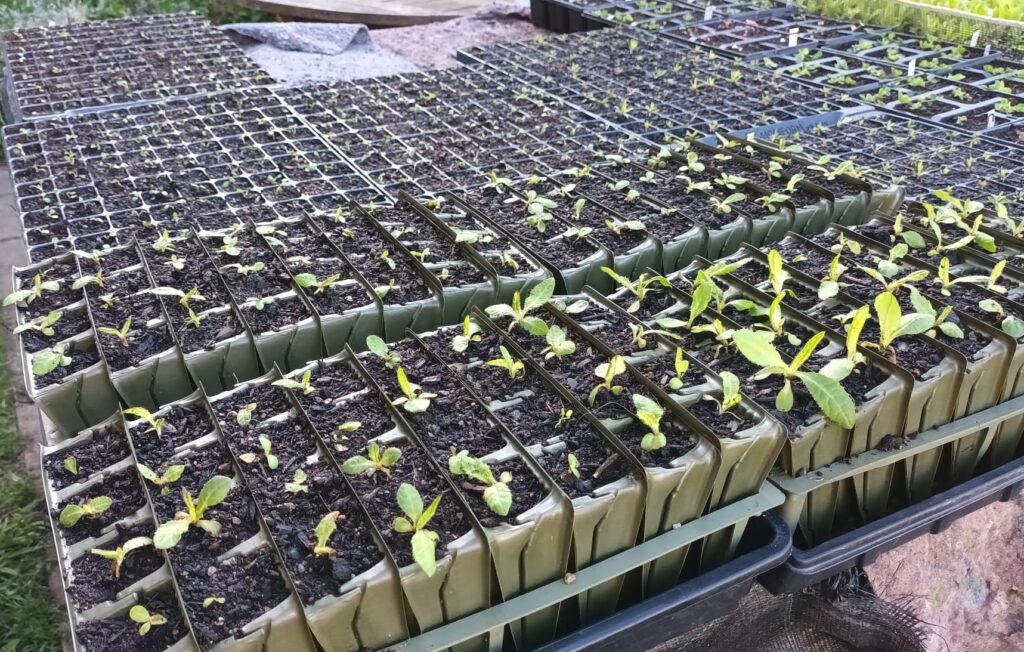
In 2025 we donated melancholy thistle plug plants to the following:
Yorkshire Wildlife Trust – Wild Ingleborough project (150+)
Hermitage Field Community Meadow (100+)
Wild About Lothersdale Community Group (100+)
Forest of Bowland National Landscape (40+)
Gresgarth Hall (20)
Arnside & Silverdale National Landscape (20)
How can you help?
Buying a melancholy thistle from Bee Friendly Wildflowers will enhance your wildlife garden meadow or border and increase local populations of bees, birds and butterflies.
Melancholy thistles grow best in damp but well-drained soil in full sun but can tolerate some dryness and partial shade. Suggested planting locations by Royal Horticultural Society include garden types such as cottage and informal gardens, wildlife gardens, wildflower meadow and flower borders and beds. An ideal location would be against a drystone wall or similarly light-coloured feature, as the 1m high plants in flower will stand out against lichen and stone backdrop.
When planting the plugs, keep an eye on the weather and be sure to water periodically as the plug plants will die if allowed to dry out.
Like other thistles, it will dominate that part of your garden and will spread both via root runners and through seed dropping, so your ‘melancholy thistle space’ needs to be checked by other smaller wildflower species. Mowing the thistles before seed setting will also reduce its spread significantly. However, it is best to mow just the unwanted spread rather than the whole area to avoid distressing the plant.
So please buy the melancholy thistle and help us make this beautiful heritage wildflower species become commonplace in our gardens and countryside again.
All income is invested into peat-free compost and other material costs.
